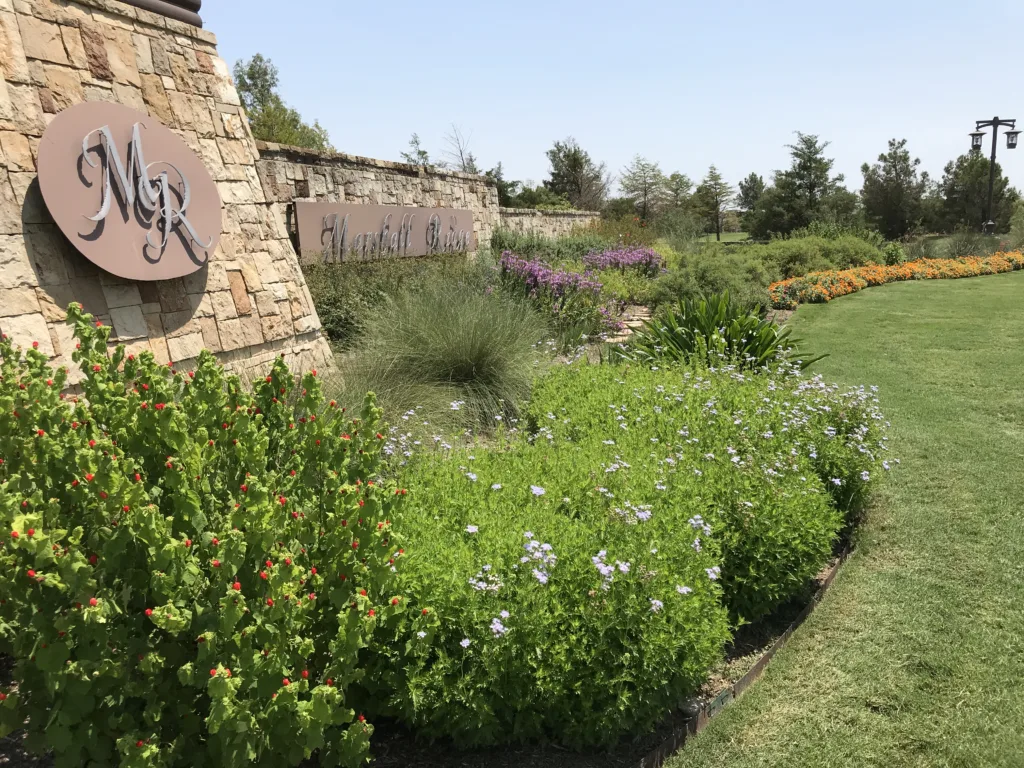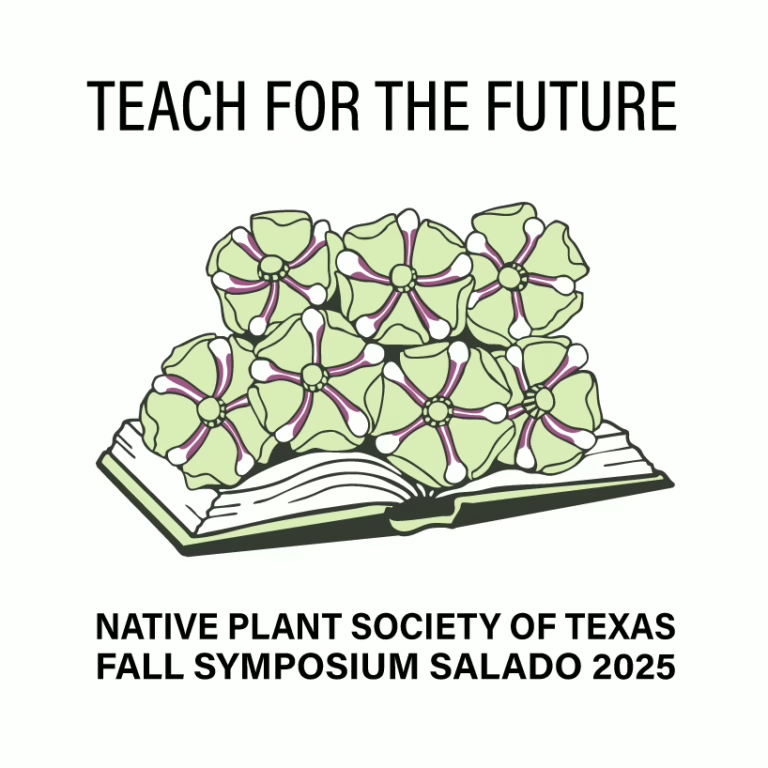
The Native Plant Society of Texas Trinity Forks Chapter awards grants to area organizations to help fund the development, expansion, or restoration of native habitats on public property. Priority is given to projects located in Cooke, Denton, Montague, and Wise counties, especially in underserved communities.
The goals of the NPSOT-TFC Grant Program are to
- Educate members and the public about the importance of native plants,
- Encourage projects that build or restore native habitats to support and increase diverse and numerous flora and fauna populations,
- Promote the research, conservation and utilization of Texas native plants and plant habitats through education, outreach and example.
Grant Funds: Amount and Source
Grants are funded by the Trinity Forks Chapter. The total amount to be budgeted for this program varies from year to year. Individual grants of up to $1000 may be awarded; requests may be granted in full or in part, and the grantee is not required to match the amount of the grant awarded.
Grant Guidelines
- A grant applicant must be directly involved in the project, serve as the project manager, and provide grant monitoring/reporting.
- Only community projects are applicable; no private home projects will be considered. Community projects may include but are not limited to schools, religious groups, nonprofit organizations, governmental entities, and homeowner associations.
- NPSOT-TFC grants may be combined with other private or public funds; other funding sources must be clearly specified in the Grant application.
- Proof of project permission from the property owner is required.
- Grant funding may be requested for new projects, the first phase of a long-term project, the continuation of an ongoing project, or part of a larger project. Awarded grants must fund projects or phases of projects that can be fully completed within one year of receipt.
- Projects must incorporate native plants for our area’s ecoregion. Please refer to our website’s “Resources” tab for additional information including “NICE” nurseries where appropriate plants and seeds may be obtained.
- Grant recipients may be asked to install “Partially Funded by NPSOT Trinity Forks Chapter” signage near the project area. (Signage provided by NPSOT Trinity Forks Chapter.)
Approved Expenditures
Funds must be spent on native plants or seeds, means to conserve or document native plant communities, and/or means to educate the public about native plants appropriate for our eco-region. Applications will be accepted for new habitats or for improvement of established habitats.
Evaluation Criteria
The Grant Committee of the Trinity Forks Chapter evaluates grant applications and recommends recipients to the Chapter’s Board of Directors. Considerations include but are not limited to
- Application Completeness
- Project Feasibility
- Community Benefit
- Impact on Underserved Areas
- Educational Opportunities
Questions for the Grant Committee may be sent at any time during the process to npsot.trinityforks.grants@gmail.com.
Important Dates
Application and Status Report JotForm links are available on this Grant Program web page.
August 28, 2025 | Application deadline. |
September 12, 2025 | Notification to award recipient(s) via email. |
September 25, 2025 | Announcement of award recipients at monthly |
March 31, 2026 | |
September 30, 2026 | Awarded grant funds must be spent, |

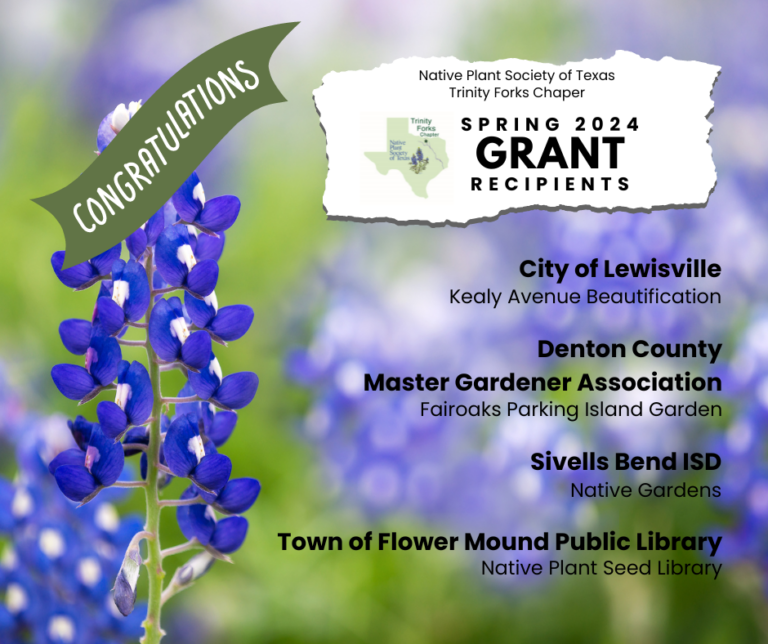
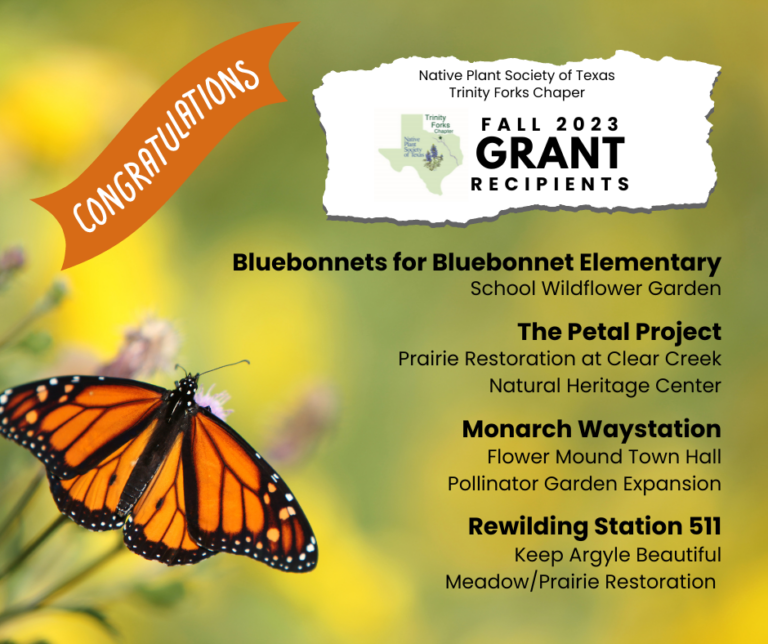
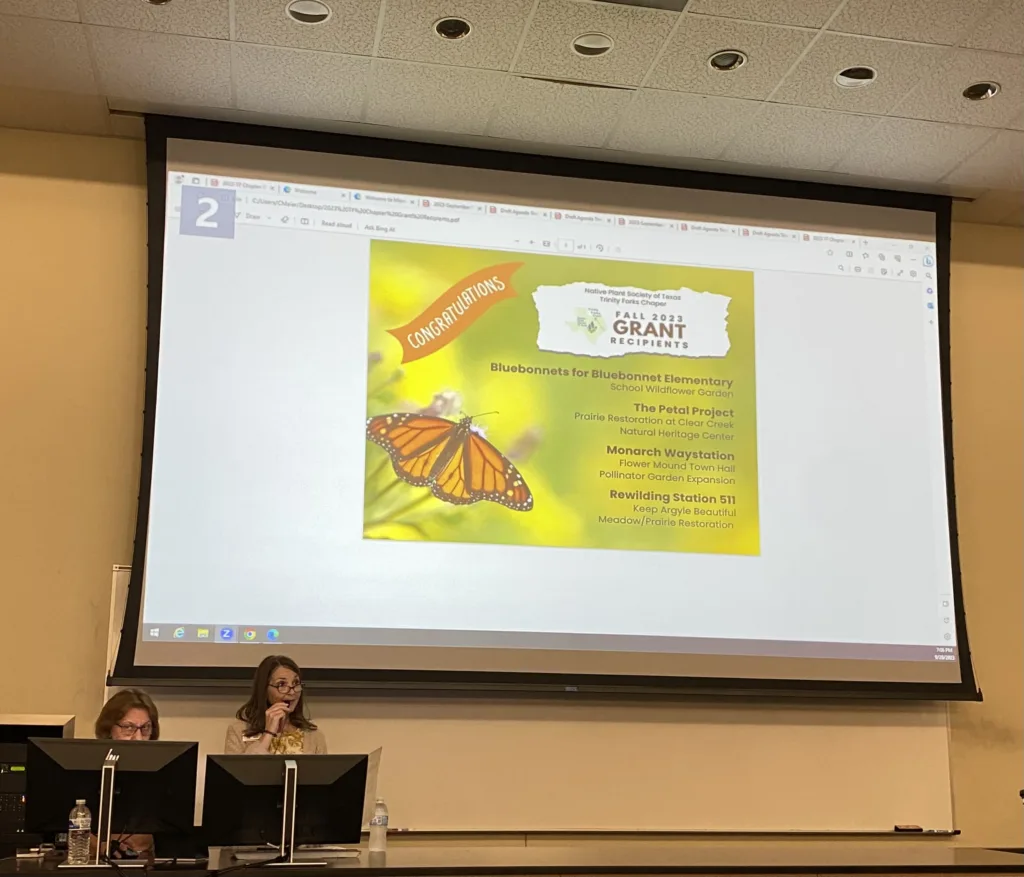
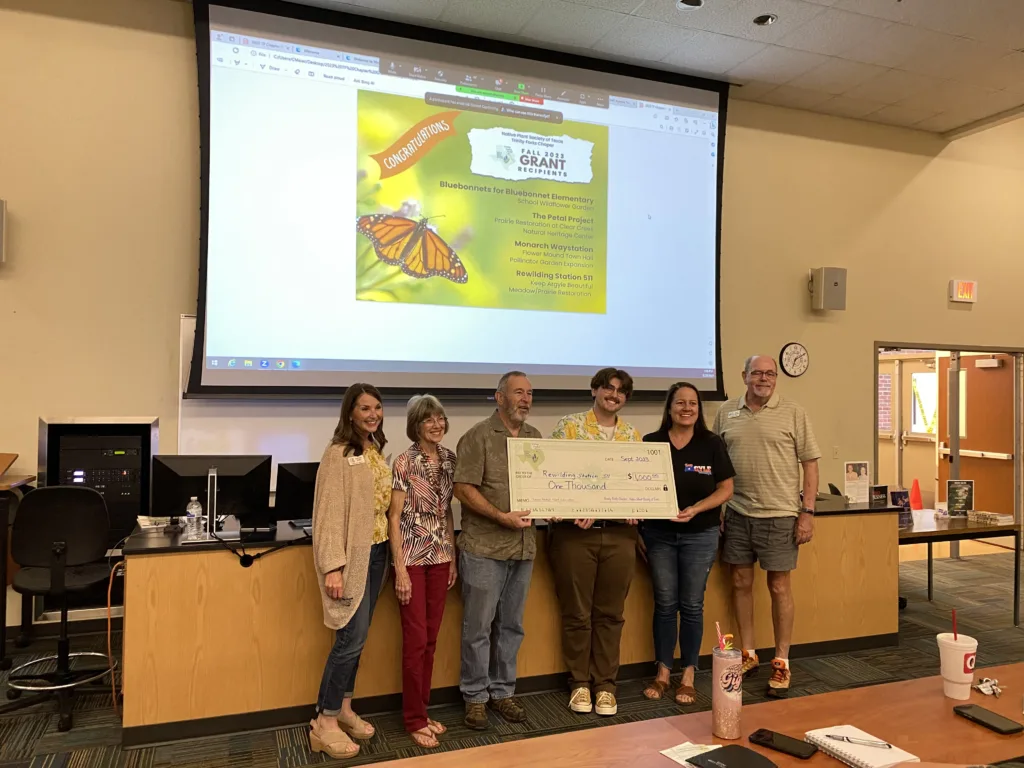
We appreciate your stewardship of native plant communities!
This image is the ‘after’ picture of a project partially funded by a previous grant:
